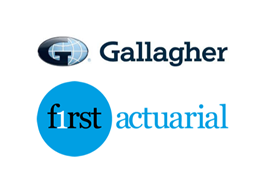The government has set an ambitious target of adding up to £29,000 to savers’ pension pots through the wide-ranging reforms contained within the Pension Schemes Bill.
The bill received its second reading in parliament today (7 July), and it is the first opportunity ministers have had to debate its contents.
The new figure, based on impact assessment modelling for the Department for Work and Pensions (DWP), is being used by ministers to reinforce the benefits of reforms aimed at consolidating small pots, improving scheme governance, and mandating value-for-money across workplace pensions.
The proposed changes will apply across defined contribution (DC) schemes and the Local Government Pension Scheme (LGPS), with the government pledging to put more money into people’s pockets and unlock long-term investment for UK growth.
For a 22-year-old average earner saving into a DC pension from the start of their career, the government estimates that reducing charges and improving diversification could boost their pension pot by £5,900 in real terms.
“We’re ramping up the pace of pension reform, to ensure that people’s pension savings work as hard for them as they worked to save.”
Torsten Bell, pensions minister
This figure is based on modelling that assumes a 6-basis-point drop in fees through megafunds’ access to greater scale, plus a 2% uplift in returns through broader asset allocation.
By contrast, the headline £29,000 figure reflects a more optimistic scenario that captures the full range of reforms in the bill, including widespread consolidation of underperforming schemes, improved long-term investment performance, and the cumulative impact of better governance across the system.

“We’re ramping up the pace of pension reform, to ensure that people’s pension savings work as hard for them as they worked to save,” said pensions minister Torsten Bell. “The measures in our Pension Schemes Bill will drive costs down and returns up on workers’ retirement savings, putting more money in people’s pockets to the tune of up to £29,000 for an average earner and delivering on our Plan for Change.”
Modelling member outcomes: the £29,000 projection explained
According to the impact assessment summary accompanying the final report of the Pensions Investment Review, the £29,000 figure reflects:
- An estimated 6 basis point reduction in charges from scale benefits achieved through creating more megafunds with more than £25bn in assets
- A 2% uplift in returns from greater asset diversification, including access to private markets
- The compound effect of these changes for a saver contributing from age 22 to 68
- Variations based on gender and earnings: male average earners could gain up to £31,000, and female average earners £26,000
Officials emphasised that the final figures will depend heavily on how reforms are implemented and how markets evolve, especially the success of the proposed Value for Money (VFM) regime and default decumulation pathways.
The headline £29,000 figure is based on a best-case scenario: uninterrupted contributions over a full working life, at average earnings, within a well-performing scheme. In reality, many savers may fall short of these projections.
Those with lower earnings, part-time roles or career breaks, particularly women and carers, are far less likely to see the full benefit. Ensuring that future reforms also address adequacy for these underpensioned groups will be critical, as many in the industry have pointed out.
“This is an illustrative case study,” the report states. “The actual benefits will differ for all savers and may be higher or lower.”
A framework to improve value

Industry experts broadly support the direction of reform but have emphasised that execution will be key to realising these projected gains, particularly through the new Value for Money regime that aims to force poorly performing schemes to improve or consolidate.
The VFM framework, which will be underpinned by legislation in the bill, is expected to provide a consistent and publicly available set of metrics across workplace pensions. These will cover net investment performance, service quality, governance standards and cost transparency.
The first regulatory assessments are expected in 2028. Where schemes are deemed to be delivering poor value, trustees may be required to take remedial action, merge with better-performing schemes or wind up entirely.
“The Value for Money framework has the potential to drive the biggest increase to people’s saving in workplace pensions, by forcing poorly performing schemes to improve or consolidate with those that are delivering value.”
Steve Leigh, Aon
Steve Leigh, associate partner at Aon, said: “While perhaps not the most attention-grabbing aspect of the Pensions Bill, the Value for Money framework has the potential to drive the biggest increase to people’s saving in workplace pensions, by forcing poorly performing schemes to improve or consolidate with those that are delivering value.
“Comparing investment returns over the last five years between the lower and upper quartile performers for the main provider default funds, our analysis shows this could result in a difference of several hundred thousand by the time they retire for a typical 21-year-old joining the workforce. This is before most providers have started investment in private market funds, which could result in even greater variance in investment returns.”
While the reforms to consolidate small pots and support retirement are welcome, Leigh argued that “it is likely that the new framework to improve value for money, if implemented well, will ultimately move the dial a long way in improving pension outcomes”.

Alison Leslie, partner and head of DC investment at Hymans Robertson, also highlighted the importance of effective assessment.
“The bill notes the publication of metric data, and within this includes investment performance as information to assess,” she explained. “However, we would like to see both forward-looking as well as backward-looking performance analysis.
“The investment strategies of some of the major master trusts have developed significantly over the past five years, and only using a backward measure will not allow for the innovation that has taken place over that time.”
Balancing innovation, competition and cost
One area of particular focus is the bill’s aim to encourage DC pension schemes to allocate more to private market investments, including infrastructure and venture capital.
These asset classes are being promoted for their potential to boost diversification and support UK growth. However, there are concerns about whether DC schemes are ready to manage them at scale – particularly given liquidity constraints and cost transparency issues.
Hymans Robertson’s Leslie welcomed the bill’s emphasis on scale and transition pathways but warned against overly rigid consolidation.
“We would not want to see consolidation in the market to such a degree that it results in the herding of particular investment strategies,” she said. “We also remain of the view that the market is best served through the diversity of providers, and innovation must not be crowded out where value to members can be proven.”
“We are pleased to see that the bill does not, currently, mandate investment in the UK and hope the government does not feel the need to change its position.”
Alison Leslie, Hymans Robertson
She also emphasised the importance of investment autonomy. “We are pleased to see that the bill does not, currently, mandate investment in the UK and hope the government does not feel the need to change its position. Those responsible for pension arrangements should be given proper authority to invest as they see best for their members.”
Mark Futcher, partner and head of DC and workplace wealth at Barnett Waddingham, also urged caution.
“When looking at value, we need to be clear that members may end up paying higher fees,” he said. “The government is keen to invest in UK private markets and infrastructure but these often come at higher cost, so those with a fiduciary oversight role need to balance this with the benefits we hope they will bring.”
He added: “Consolidating smaller pots will reduce administrative costs so this will help, albeit perhaps this threshold should rise to capture more small pots.”
The Pension Schemes Bill in a nutshell
The Pension Schemes Bill introduces legislation to:
- Consolidate small pots of £1,000 or less into high-performing schemes
- Create multi-employer DC “megafunds” with a minimum £25bn in assets by 2030
- Mandate default income pathways in retirement
- Reform LGPS pooling rules and strengthen investment in local infrastructure
- Grant defined benefit (DB) pension scheme trustees greater flexibility to share surplus funds with members or employers
- Regulation of DB superfunds
- Changes to Pension Protection Fund rules, including around the risk-based levy

Zoe Alexander, director of policy and advocacy at Pensions UK, the industry trade body, said: “The introduction of the Pension Schemes Bill is a significant milestone, bringing forward necessary legislation to enact important reforms that have the full backing of the pensions industry.
“This includes small pots consolidation, the Value for Money regime, decumulation options and changes to give DB funds more options for securing member benefits over the long-term.
“Once fully implemented, these measures should reduce the cost of administering pensions, remove complexity for savers and help ensure schemes are maximising the value they provide members.”






















